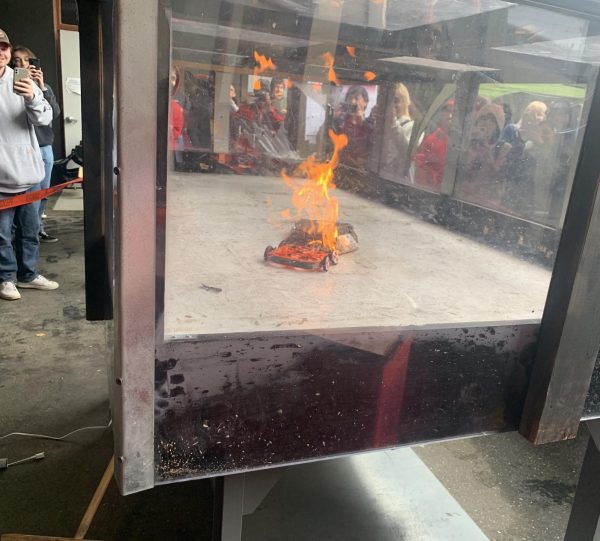Published 2012-01-23T22:28:00Z”/>
Stephanie Geske
For students away from home and free from parental reign for the first time, piercings or tattoos can seem like ways to assert individuality or maturity. But some botched jobs can ruin the fun of having this work done, so here are a few things to keep in mind.
<strong>Safety first
</strong>The easiest way to ensure a safe piercing is to go to a clean shop, said Chris Pollok, a body piercer at Red Room Tattoo. Ask questions about how they sterilize equipment. If they can’t come up with answers to basic questions, that’s a problem.
When going in to get a piercing, a customer should witness the piercer opening sterile packages with gloves, said Stephanie Ditty, a body piercer at Sacred Art Tattoo.
“Everything I do, every tool I use is in its own separate bag and I open it in front of the customer,” she said.
The cleanliness of the shop and the attitudes of people who work there are important, Pollok said.
“Trust your instincts,” he said.
<strong>Know your jewelry
</strong>Piercings using specific or low-quality metals can cause allergic reactions, said Amber Delaney, body piercer at Victory Tattoo. Shops should be using implant-grade steel, and jewelry that isn’t up to quality can be identified by a gray, dull look or shininess that fades over time.
Most of the population is allergic to nickel and many are allergic to silver, so those metals should not be used for a piercing, Delaney said.
Piercing gauges, which determine the size of the needle and are used to make the hole, are also important, Delaney said. For high-contact areas such as the lip and tongue, body piercers typically use 16-gauge piercings, which is equivalent to one-sixteenth of an inch. Any smaller than that and the rings run the risk of snagging and tearing out.
<strong>Piercing guns
</strong>Potentially dangerous piercings aren’t limited to shops skimping on jewelry. They extend to methods that seem safe to mothers and children, according to the Association of Professional Piercers. Piercing guns are still used at stores like Claire’s, even though they were originally created to tag the ears of dairy cows. Most of the employees who do these piercings aren’t certified.
“You can’t sterilize guns,” Pollok said. “The gun breaks the skin and causes fluid on a microscopic level to spray over it, and all they do is wipe it down and use it on the next kid.”
With a piercing gun, it’s the jewelry that’s making the piercing, he said. The blunt force causes trauma to the tissue, which leads to scarring.
Jennifer Rene, a junior business information systems major, still remembers the pain of having her ears pierced with a piercing gun at age 4.
She was excited until she felt the first punch in her ear, she said.
“My brother had to get me and nail me to the chair so I could get my second piercing,” she said.
<strong>Infection misconception
</strong> Infection is a word that’s thrown around a lot for recently made, tender piercings, but it’s not always accurate, Delaney said. Redness around a new piercing is normal, and it can take four months after an ear cartilage is pierced for it to stop feeling sore.
Although there are risks to being pierced, many piercers go through a two-year apprenticeship, Ditty said.
“There are standards that people have to abide by,” she said.
<hr />
<strong>Stephanie Geske can be reached at
</strong> <em>[email protected]</em>













